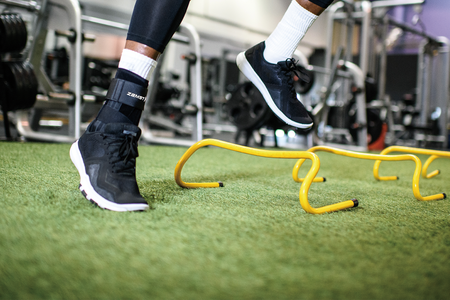Articular cartilage Injuries:
Articular Cartilage is the cartilage covering the articular surfaces of the bones forming a synovial joint. Articular cartilage defects can be limited to the superficial layers of cartilage (partial thickness) or can extend to the underlying bone (full thickness). These defects can cause recurrent pain, swelling, and limited activity. The body has the potential to repair these defects, however, the type of tissue it produces (fibrocartilage) is inferior in nature to the original tissue (hyaline cartilage). The cartilage is divided into specialized layers that help to resist different forces placed upon the joint.
Grading
Articular cartilage injuries are graded from 0-4 as how much damage there is to the tissue. A Grade 0 is normal. Grade 1 is nearly normal with superficial lesions or cracks. Grade 2 is abnormal with lesions extending down to less than 50% of cartilage depth. Grade 3 is severely abnormal extending down to greater than 50% of the cartilage depth, but not the subchondral bone. A Grade 4 lesion is severely abnormal with damage into the subchondral bone.
Treatment
There is a current array of treatment options from non-invasive physical therapy to surgical treatment techniques including simple palliative, reparative, and restorative techniques. The goals of any cartilage restoration procedure are to: 1) replace damaged cartilage with hyaline or hyaline-like cartilage; 2) reduce a patient’s symptoms; 3) return a patient to a productive level of function; and 4) allow for further treatment options should they become necessary.
Restoration Techniques
Arthroscopic Lavage and Debridement – the goal is to reduce inflammation and irritation within the joint by smoothing out surfaces and washing out fragments of cartilage and calcium deposits from the knee.
Microfracture – a reparative technique where controlled perforation of the subchondral bone of the defect to cause bleeding to stimulate new cells growth and turn over.
Autologous Chondrocyte Implantation – a restorative procedure in which a concentrated solution of cartilage cells are implanted into a defect with the goal of restoring hyaline cartilage to the injured area.
Osteochondral Grafting – is also a restorative technique where healthy articular cartilage is taken from another site and transferred as a plug for the defect.
 Annie Lee, DPT
Annie Lee, DPT
ProSport Physical Therapy & Performance
2777 Bristol Street, Suite B Costa Mesa, CA 92626
Resources:
Lewis P, McCarty L, Kang R, Cole B. Basic science and treatment options for articular cartilage injuries. Journal of Orthopaedic and Sports Physical Therapy. 2006; 36:717-727.






